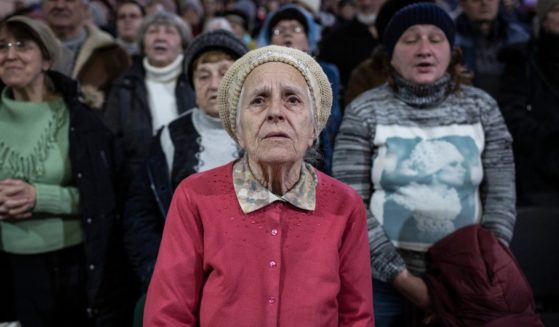NYPD training official: Garner officer used banned chokehold
NEW YORK (AP) — The New York Police Department official in charge of training recruits said Tuesday that the restraint technique an officer used on Eric Garner five years ago, leading to his death, “meets the definition” of a chokehold, a practice banned since the 1990s because of its potential for lethality.
Cell phone video of the July 2014 confrontation shows Garner coughing after Officer Daniel Pantaleo wrapped an arm around his neck — an indication that pressure on Garner’s windpipe obstructed his breathing, Inspector Richard Dee said in testimony at a disciplinary trial that could lead to Pantaleo’s firing.
“I’m not saying he intentionally did that, but that’s where his arms are,” Dee testfied.
Dee is the latest high-ranking official to say what Garner’s family has long believed: that Pantaleo’s conduct in grabbing Garner and wrestling him to a Staten Island sidewalk violated department rules and ran counter to his training and the repeated warnings officers receive to avoid tactics that could hinder breathing.
“When I heard that, I was just wondering: Why is Pantaleo still on the payroll? Because that sounds like it should be immediate – I mean, immediate – dismissal,” Garner’s mother, Gwen Carr, said after Dee testified on the second day of a trial that could last two weeks.
In the days after Garner’s death, Mayor Bill de Blasio and the police commissioner at the time, Bill Bratton, both said it appeared to them that Pantaleo had used a chokehold, and the medical examiner ruled that a chokehold caused Garner’s death. The autopsy is expected to be the focus of Wednesday’s testimony.
An internal affairs investigation completed five months after Garner’s death also reached the conclusion that a chokehold was used and that Pantaleo should face disciplinary charges. But the police department put its case on hold, saying it was deferring to federal prosecutors who were looking into potential civil rights charges.
Last year, however, police officials said they were out of patience and cleared the way for a police watchdog agency to pursue a disciplinary case against Pantaleo.
The NYPD’s disciplinary process plays out like a trial in front of an administrative judge. Normally the purpose is to determine whether an officer violated department rules, but that’s only if disciplinary charges are filed within 18 months of an incident.
Because Pantaleo’s case languished, the watchdog Civilian Complaint Review Board must show that his actions rose to the level of criminal conduct, even though he faces no criminal charges and is being tried in a department tribunal, not a criminal court.
The final decision on any punishment lies with the police commissioner. Penalties range from the loss of vacation days to firing.
Pantaleo, 33, denies wrongdoing. He has been on desk duty since Garner’s death.
The NYPD banned chokeholds in 1993 after a spike in deaths of people being apprehended or in police custody.
The department’s patrol guide, a mammoth volume of practices and procedures, states that officers, “will NOT use chokeholds.” It defines the ban to include “any pressure to the throat or windpipe, which may prevent or hinder breathing or reduce intake of air.”
A section on chokeholds in the police academy manual issued to Pantaleo in 2006 puts it more bluntly: “they’re deadly.”
At first, Dee said, it appeared Pantaleo was going for an arm bar, arm lock or what’s known as a “seat-belt hold” as he grappled with the 350-pound Garner. All of those are approved restraint techniques.
Then, Dee said, Pantaleo is “kind of just wrapped around his neck and shoulder and is trying to just throw him down.”
“He’s kind of taking a little ride on his back,” he said.
Pantaleo’s lawyer and union contend he was using the “seat-belt hold.” They say his training instructor will testify that he taught Pantaleo the technique at the police academy.
Dee questioned that, saying the academy didn’t teach the technique until 2011 – five years after Pantaleo joined the force. Dee said there’s no indication in police department records that Pantaleo learned the move during later training sessions.
“With something as serious as a takedown, it would not be appropriate to teach something that wasn’t approved and wasn’t in the lesson plan,” Dee said.
___
Follow Michael Sisak at twitter.com/mikesisak
___
Send news tips, documents and recordings to AP securely and confidentially: https://www.ap.org/tips
The Western Journal has not reviewed this Associated Press story prior to publication. Therefore, it may contain editorial bias or may in some other way not meet our normal editorial standards. It is provided to our readers as a service from The Western Journal.
Truth and Accuracy
We are committed to truth and accuracy in all of our journalism. Read our editorial standards.












